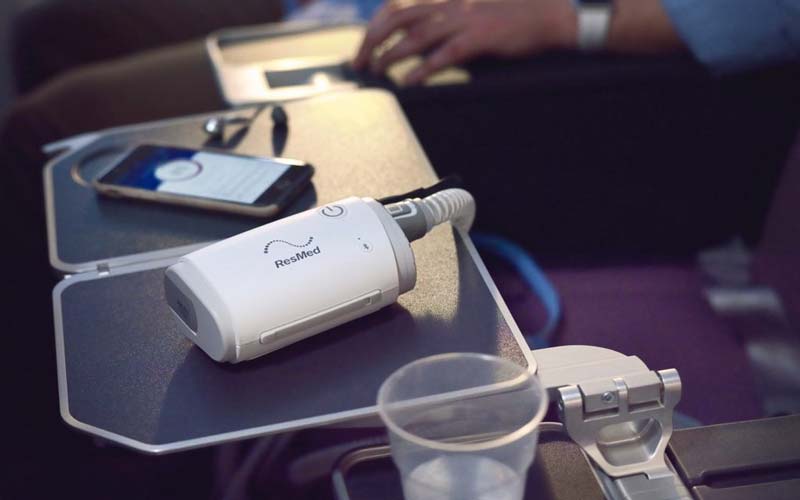
Unless you’re 100% certain you’ll never sleep in a bed other than your own, the portability factor is something to consider when looking to buy a CPAP machine. If you spend a good part of your life on the road, a specially-designed, travel CPAP machine may be the answer. Kohll’s Rx in Omaha, Lincoln and SW Iowa Respiratory Therapists can help you get the right travel CPAP/BIPAP.
Even if you don’t travel often, there’s always going to be situations in which you’ll need to bring your machine to new sleeping environments. A machine that’s lightweight and portable is going to be a better fit than a large, bulky, heavy machine. Most modern CPAP machines are lightweight, and some even come with a carrying case, so there’s a chance you can find a highly portable machine even if it’s not listed as a travel machine. All it takes is paying attention to the weight and finding one that fits your needs.
Travel-sized versions of continuous positive airway pressure (CPAP) machines are popular. These devices include the ResMed AirMini, Somnetics Transcend, Apex XT Fit, Human Design Medical Z1, and others. What are the pros and cons of using travel CPAPs? Consider some of the potential benefits and whether the cost is justified for a device that can more easily be used with travel—including while camping with an integrated battery.
The first question that comes up when considering a portable CPAP device is: How big is it, really? Fortunately, those who use travel CPAP devices will discover the reduced size makes a huge difference. Many are as small as an alarm clock or smartphone. Here are some of the specifications for popular models:
With the current exception of the AirMini, each of the most popular travel models has the option of running the device off a battery. These are available for purchase at an additional cost. The amount of time the charge will last will vary based on the pressure that is being delivered and the potential use of accessory components like a heated humidifier.
As an example, the Transcend/360 has a battery that will reportedly last for 1&1/2 nights when the CPAP pressure is set to 10 centimeters of water pressure (and presumably longer for settings lower than that).2 In practical use, the battery for most models may be expected to last one to two nights with standard use.
The lithium-ion battery used with travel CPAP machines is rechargeable. Unfortunately, the device will be of no use until a power source can be accessed. This may make it less than desirable to be carrying it into the woods on a hiking or camping trip that lasts more than a night or two unless you also get a solar panel charger. These chargers are simply hung over your backpack while hiking to recharge the battery.
Each of the available models has an AutoCPAP option with default pressure settings that can range from 4 to 20 centimeters of water pressure. These settings will be prescribed and refined by your sleep medicine provider to optimize therapy. As these are medical devices, a prescription is required to obtain the equipment.
Travel CPAP machines have some features that may make them an attractive option for use while away from home. Many possess similar design elements that reflect the standard models. There have also been some favorable improvements:
There are some reasons that you might not want to consider the purchase of a travel CPAP. These may range from relatively minor nuisances to significant detriments that may steer you toward alternatives.
If you are interested in a travel CPAP machine, there are some great options to explore. Many have a degree of reliability that has been earned from companies with years of experience in designing and manufacturing these devices. Though there have been significant strides forward with the latest technology, there are still some areas for further improvement. Consider your needs and whether a portable travel CPAP matches your goals of therapy and adventure. Kohll’s Rx Respiratory Therapists in Omaha, Lincoln and SW Iowa are available to assist you to help choose the best CPAP therapy for you.